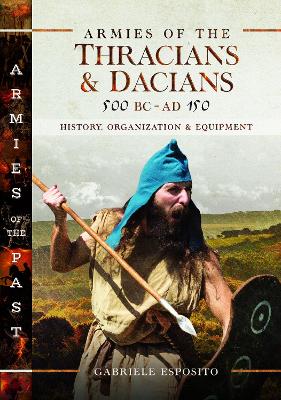Reviewed by annieb123 on
Armies of the Thracians and Dacians, 500 BC to Ad 150 is a capsule survey of these two Indo-European tribes collated by military historian Gabriele Esposito. Due out late June 2021 from Pen & Sword, it's 192 pages and will be available in hardcover and ebook formats.
This is one of a series of books on ancient military history by the publisher with similar layout and historical overview. They're accessible to the average layman with some background in military history and the language is clear and understandable. The work is not rigidly academic; it's not annotated and there are no chapter notes. The author has included an abbreviated bibliography including some contemporaneous primary sources, but most of the work he's based this work on are secondary histories and modern re-enactors (primarily two groups: Historia Renascita and Ancient Thrace). That's not necessarily a *bad* thing, but it is something to know going into the read.
There are a number of photographs; they're mostly from the modern historical re-enactor's group Historia Renascita. I found the actual information was presented somewhat haphazardly and difficult to find again. The timelines hop around quite a bit, and the chapters end quite abruptly. The photographs (which are the book's best feature) are scattered throughout the text willy-nilly.
Three and a half stars. I think this would make a good choice for modern readers interested in costume re-enacting groups like the SCA and similar. It would also be a good choice for readers who are already invested in this series from the publisher.
Disclosure: I received an ARC at no cost from the author/publisher for review purposes.
Reading updates
- Started reading
- 25 April, 2021: Finished reading
- 25 April, 2021: Reviewed
